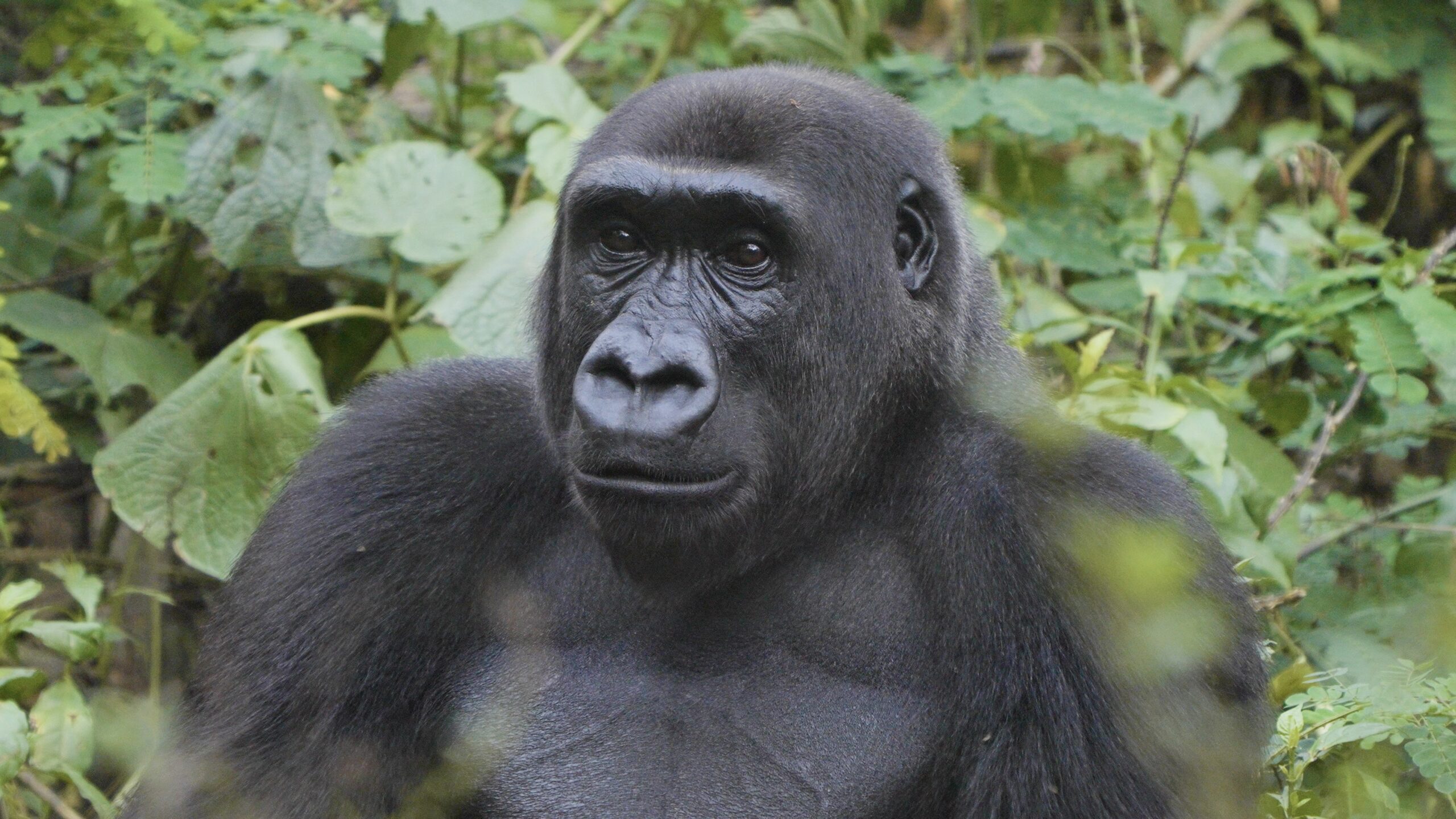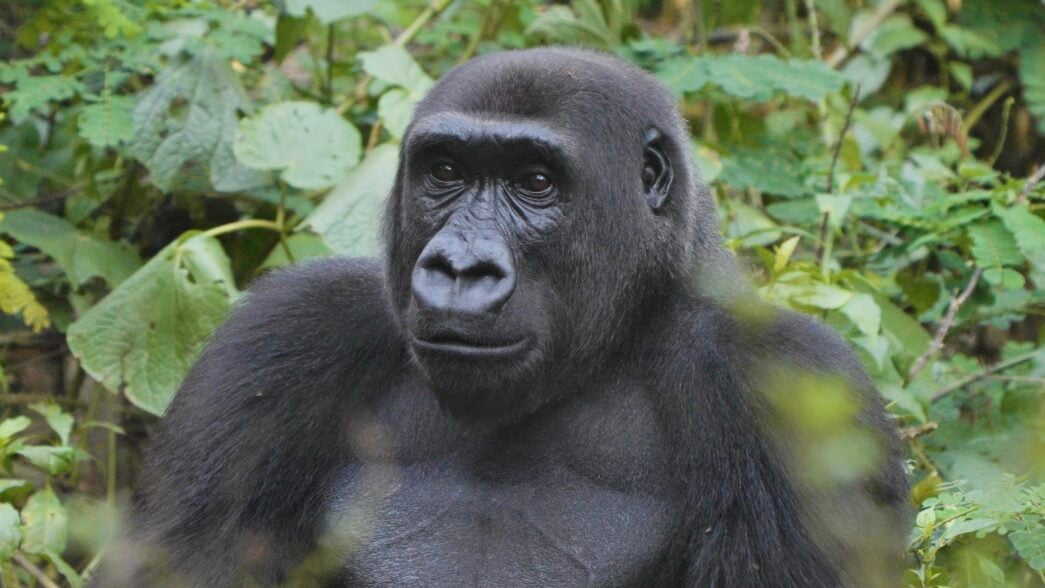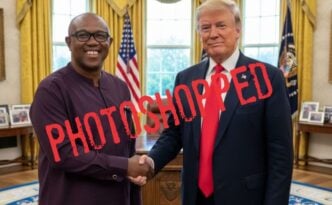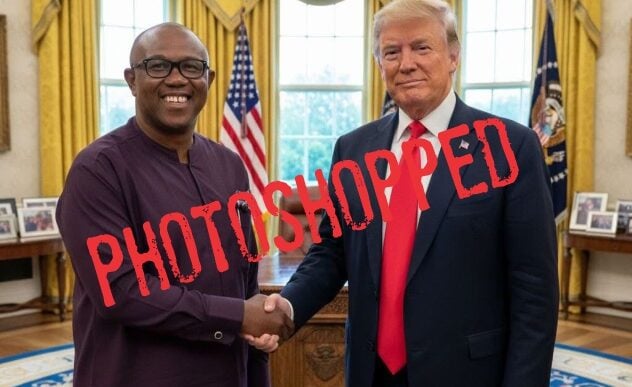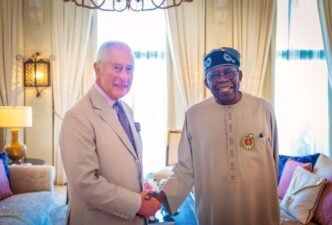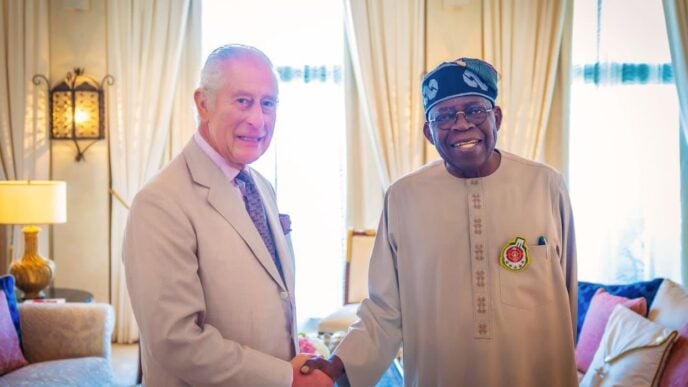It was June 1995, the peak of the rainy season in Obudu, a mountainous town in Cross River, Nigeria’s south-south region, when David Ocha, a 48-year-old chief from Apah Ajili in Becheve, Obanliku area of the state, went into the bush to check his trap.
He saw a broad-shouldered creature swell its chest and hammer with cupped fists — thum, thum, thum. Then came a scream, raw and piercing, the kind that chills the marrow, as though it had just sighted a ghost. The cry thundered through the forest like an enormous talking drum, rattling the air until the hills seemed to stir awake.
For a fleeting moment, Ocha thought it was a hairy man who had gone weeks without a blade. But it dawned on him that he was face to face with the elusive Cross River gorilla.
Fear surged through him, sharpened by a childhood memory of his late uncle, who once tried to kill a gorilla and paid dearly for it. The animal had fought back, sinking its teeth so deep into his uncle’s hand that the scars seemed less like wounds and more like a permanent warning label.
Advertisement
Haunted by that story, Ocha spun around and bolted in the opposite direction.
“I saw movement in the grass. At first, it looked like a hairy human being who hadn’t shaved for a long time, cleaning his face. Then it beat its chest and screamed so loudly. That was when I knew it was a gorilla,” Ocha recalled.
“I was running towards the opposite direction, and the gorilla was just moving towards the valley.”
Advertisement
THE ELUSIVE CROSS RIVER GORILLA
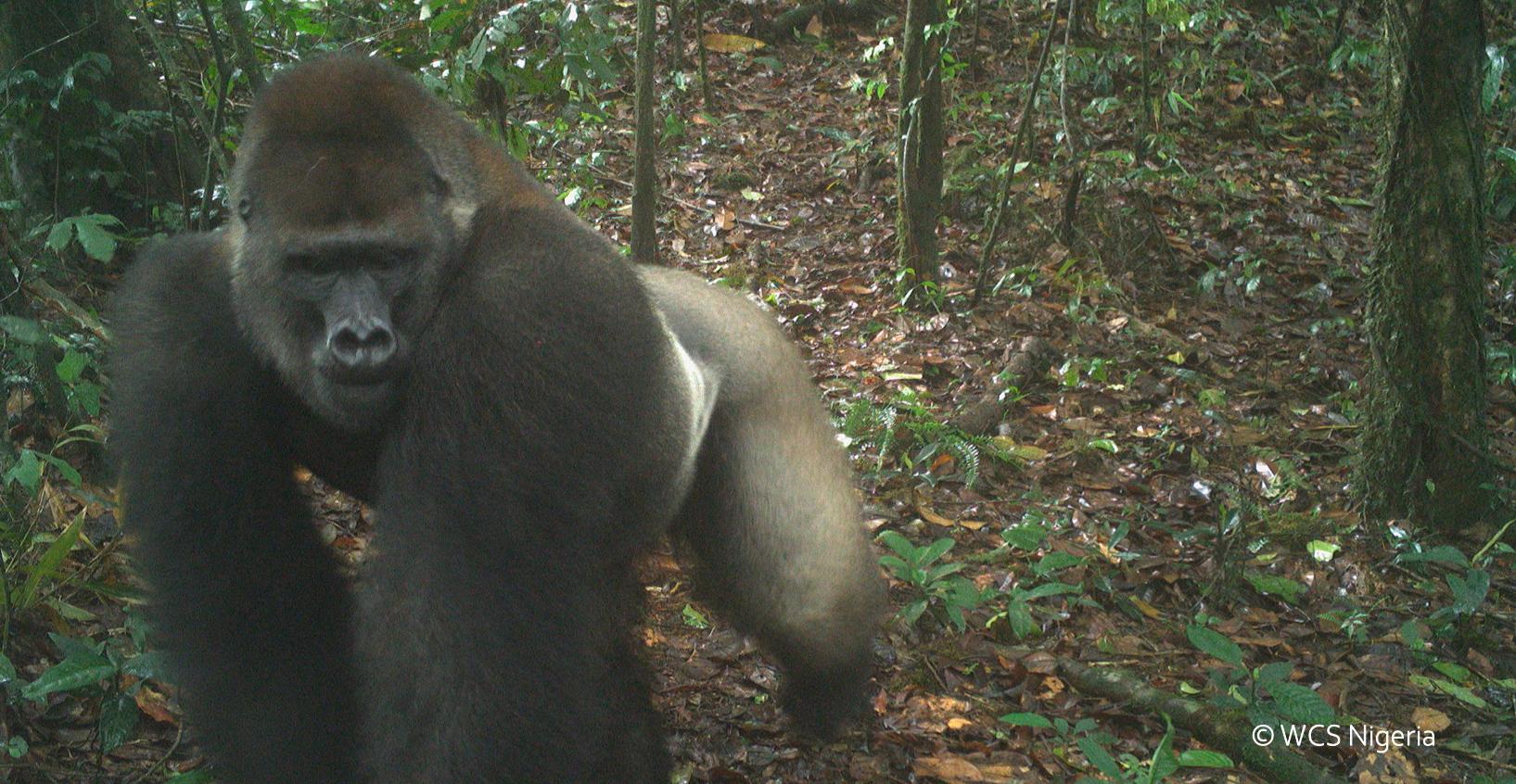
The Cross River gorilla (also known as Gorilla gorilla diehli) is Africa’s most endangered great ape, with less than 300 individual remaining in the wild, and about a third of them found in Nigeria.
The ape, which is a subspecies of Western gorilla, has a narrower skull, shorter arms, and lighter, chocolate-tinged fur that blends into the forest shadows. Scientists say its reclusive nature makes it one of the hardest primates to study.
In Nigeria, Cross River gorillas inhabit remote strongholds such as the Afi Mountain Wildlife Sanctuary, the Mbe Mountains, and the Okwangwo division of Cross River National Park.
Advertisement
The apes range across the Nigerian border into Cameroon, using a chain of rugged forested corridors to move between mountain habitats. These cross-border movements are crucial for maintaining their genetic diversity, but increasing human activity is steadily shrinking and fragmenting these pathways.
They feed on fruits, leaves, stems, and sometimes farm crops when human activity pushes them closer to villages.
Unlike the aggressive image that haunted Ocha’s memory, Cross River gorillas are typically wary of people, preferring to melt back into the forest at the first hint of human presence.
According to Ocha, the Becheve people regard such encounters as deeply symbolic. To them, the gorilla is the most harmonious creature in the forest, an emblem of peace rather than conflict.
Advertisement
HOW INDIGENOUS BELIEFS PROTECT THE CROSS RIVER GORILLA
An African adage says the forest does not only hide man’s enemies but also guards the wisdom of his ancestors. Among the Becheve people, elders teach that part of the wisdom lies in the gorilla.
Advertisement
Ocha said their oral tradition tells tales of how gorillas once helped their forebears cross rivers during times of war. Because of this, killing a gorilla or even a monkey remains taboo.
This has become an unwritten covenant of gratitude, passed down through generations and still honoured today.
Advertisement
The same belief runs deep in neighbouring villages like Okwangwo, where people recount similar stories of gorillas guiding their ancestors through crises, reinforcing the bond between man and ape in these forested lands.
According to the chief, killing a gorilla is seen as a stain so grave that it clings to the offender even in death. It is believed such a person did not pass on peacefully but endured a long season of sickness and suffering before dying.
Advertisement
To ease this troubled transition, the community performs a burial rite known as ‘Ayaah’ — a ritual shrouded in secrecy, reserved only for those whose hands have drawn forbidden blood, whether of a gorilla or of another human being.
Ocha said that ‘Ayaah’ involves the beating of special drums, a slow, solemn march, and the use of sacred leaves gathered from the forest, and used to cleanse the village paths before being dropped at both entrances of the settlement to seal the spirit’s passage.
During the ritual, outsiders and the uninitiated are strictly barred from watching. Once the final atonement is made, the offender’s spirit is believed to find rest, shielding the community from the wrath of both the ancestors and the forest itself.
“Even in death, there are rituals for those who defy this law. It is believed such a person will suffer a painful end,” the chief said.
“From what I was told by those who have witnessed it, the ritual involves the beating of special drums, a solemn procession, and the gathering of sacred leaves from the forest.”
FOLKTALES AS A CONSERVATION MECHANISM

In these oral traditions, the gorilla is projected as more than an animal but a mirror of the forest itself.
Among the Becheve, elders pass down stories that turn the gorilla into both a teacher and guide. One tale tells of the creature as the family’s protector, watching over the young, guiding them when to climb, when to leap, and when to hold still.
Through this, children are reminded that just as young gorillas obey the signals of their father, they too must heed their parents’ instructions, or risk harm.
Another story speaks of a group of little girls who once strayed deep into the forest in search of firewood. Night fell, and the valley swallowed them in darkness. The men of the village fanned out in search parties, but the children could not be found.
Hours later, the girls appeared safely at the edge of their compound. When asked how they found their way home, they described being led by an “old hairy man” who guided them not along the path they had entered, but through a hidden mountain trail that opened behind their houses. The elders concluded it was the gorilla who had returned them, sparing their families from grief.
Such tales endure because they carry lessons. They warn children against wandering into forbidden parts of the forest, and they remind families that the gorilla is not a prey but a protector.
Ocha noted that in his community, when a gorilla appears in a dream, it foretells prosperity, but if it confronts one in the wild, it signals a destiny in conflict. Such beliefs, rooted deep into the cultural fabric, have helped shield the species for decades, long before the arrival of modern conservation laws.
But the forest is changing. Expanding cocoa plantations, logging, and hunting for bushmeat are steadily eroding the gorilla’s last refuges.
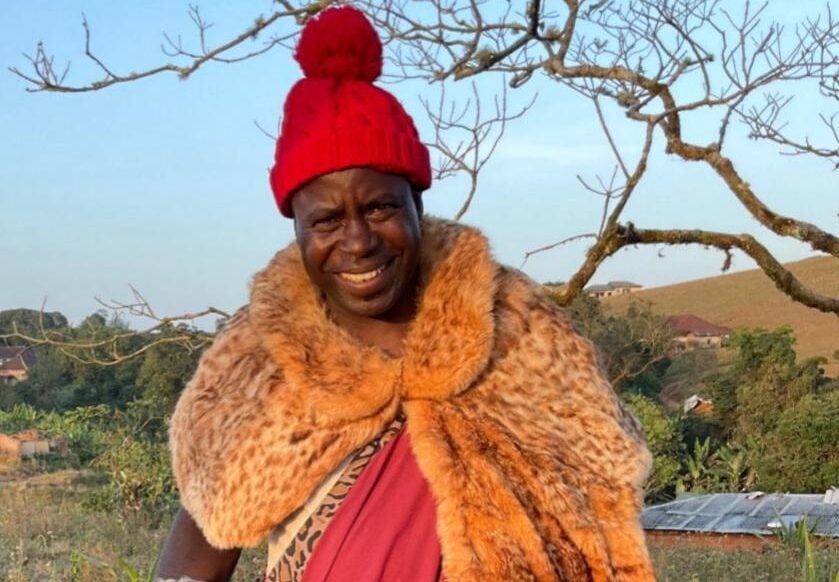
And while folk wisdom still holds sway among the elders, younger generations face new pressures — economic survival, farmland expansion, and dwindling forest cover — that threaten to weaken those old bonds.
It is here that science and tradition now meet. Conservationists argue that sustaining the gorilla’s future depends not only on rangers and protected areas, but also on keeping alive the cultural beliefs that once made killing a gorilla unthinkable.
Inaoyom Imong, country director of the Wildlife Conservation Society (WCS), says those cultural taboos remain important allies, but warns they are no longer enough.
“These gorillas are critically endangered. They face threats from poaching, habitat destruction, farming, and the expansion of human settlements into their habitat,” Imong said.
CROSS RIVER GORILLA AND ITS TOURISM POTENTIALS
For more than two decades, the Wildlife Conservation Society (WCS) has worked with the National Park Service, the Cross River State Forestry Commission, and local communities to strengthen protection through ranger patrols, equipment support, alternative livelihoods, and awareness campaigns such as the radio programme “My Gorilla, My Community”.
The organisation is also backing Nigeria and Cameroon in a joint push to secure UNESCO World Heritage status for the gorilla’s habitat, a move that could boost global recognition and attract sustainable tourism while keeping the forests intact.
Government officials in Cross River say they are also taking steps to champion conservation while unlocking tourism opportunities.
At the launch of the Boki Gorilla Carnival and Festival in August, Eme Affiah, permanent secretary in the ministry of tourism, culture and arts, described the state’s rich biodiversity as a unique asset.
“Our vast forests are home to rare wildlife species, including gorillas, which are a major tourism attraction,” she said.
“We don’t have to struggle to showcase our tourism sites. We have gorillas in abundance in Boki LGA, not just pictures, but real-life gorillas.”
Eteng Williams, senator representing Cross River Central, pledged support for a conservation-led vision of growth that empowers women and youth while safeguarding biodiversity through tourism and heritage.
According to Williams, if properly managed, gorilla-based ecotourism could generate revenue for local communities, improve livelihoods, and strengthen support for protecting Nigeria’s only gorilla population.
But Imong warns that while the tourism potential is real, it must be approached carefully to avoid putting the gorillas at greater risk.
According to him, habituating the shy apes too soon could expose them to poaching and health risks.
He also decried the limited government funding, which has left international donors such as the European Union to bear much of the burden.
“For now, ecotourism should focus on forest experiences like birdwatching and hiking,” he said.
“As hunting pressures decline, we can later consider gorilla habituation. Protecting the Cross River gorilla is not the task of one person or one organisation. Without collective effort, we risk losing them forever.”
As the world marks World Gorilla Day with the theme ‘One Forest, One Health, One Future‘, Imong urged Nigerians to see the Cross River gorilla as a vital part of their natural heritage, one that reflects the health of their land, their communities, and their own well-being.
Observed annually on September 24, the day is set aside to raise awareness about the threats facing gorillas, celebrate conservation successes, and mobilise support for protecting the species and their habitats.
The WCS country director called on government, local communities, companies, and international donors to treat the gorilla’s survival as a shared responsibility.
He noted that protecting the Cross River gorilla is not the task of one person or one organisation. It requires collective effort, from safeguarding the forests that are their home to ending hunting and investing in long-term conservation.
For Ocha, saving the Cross River gorilla will require more than taboos and culture; it will take deliberate action.
The chief urged the government to lead with stronger enlightenment campaigns, especially in schools and rural communities, to ensure that young people and those outside formal education understand the value of protecting the gorilla and its habitat.
This article was produced in partnership with Wild Africa.
